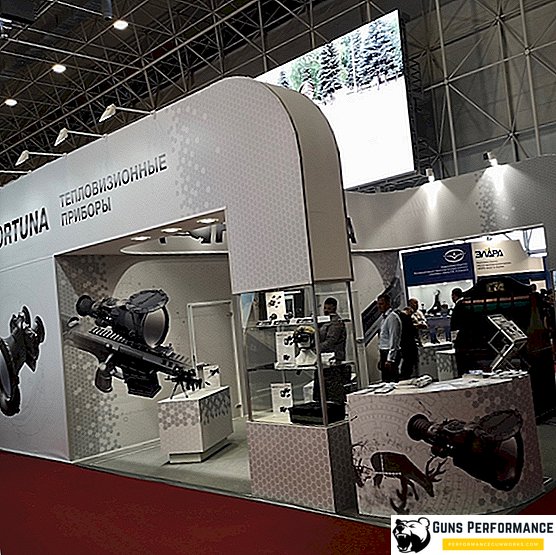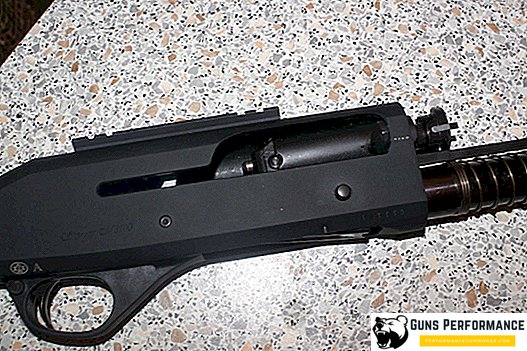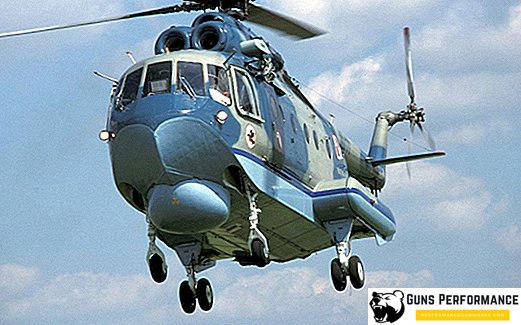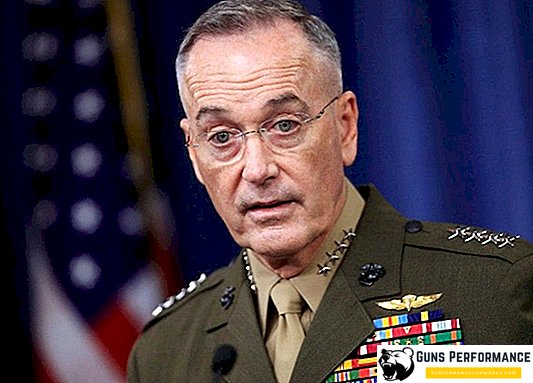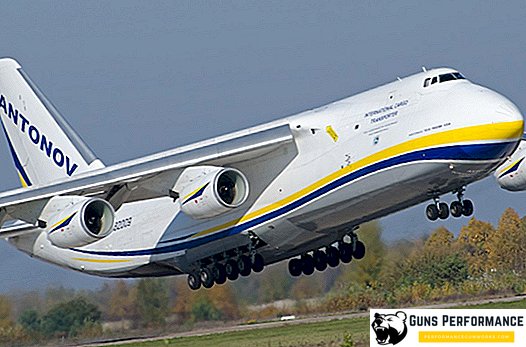In 1939-1941, the Third Reich managed to seize vast territories. The German army, or Wehrmacht, managed to subdue about half of the European powers, and the other half - to make their allies and satellites. The campaigns of these two years were lightning fast, and the power of German weapons was impressive. However, the victorious march of the Wehrmacht did not last long, and after the defeats of 1942-1943, it almost disappeared. The first major defeat of the Hitler army was the battle of Moscow.
Background and background of the battle for Moscow
On June 22, 1941, German troops invaded the Soviet Union. From the very first days, German operational excellence was clearly delineated. By creating numerical superiority in forces in some areas, the Wehrmacht, in the first weeks, managed to inflict a serious defeat on the army, approximately equal in size to it. Also, the Soviet leadership, in view of the catastrophe of June 1941, failed to realize its technical advantage.
In late June - early July 1941, the Western Front of the Red Army was almost completely defeated. In fact, at that time, the road to Moscow was open to the Wehrmacht, but the long distance to the Soviet capital made its capture in the summer of 1941 impossible. However, the situation remained difficult.
The advance of the German troops was so fast that by the tenth of July they were able to approach Smolensk. Thus, approximately 700 kilometers out of 1000 from the border to Moscow have already been overcome. But at the same time, and the Wehrmacht, having covered such a huge distance in a relatively short time, exhausted somewhat. The 2nd German Panzer Group under the command of General Guderian, breaking through the Dnieper, seriously broke away from the main forces and was forced to stop the offensive.
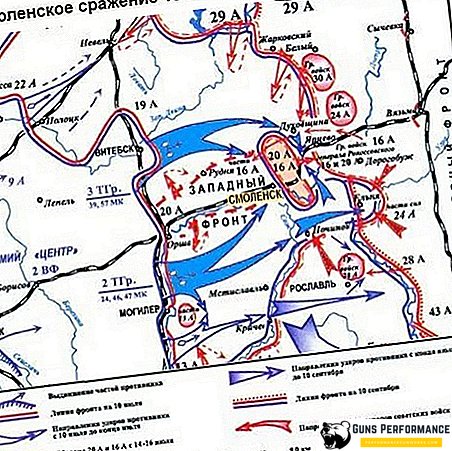
In the period from July 10 to September 10, 1941, the Red Army conducted a whole range of defensive and offensive actions that went down in history as the Battle of Smolensk. Here the Soviet troops managed to detain the Nazi troops, rushing to Moscow, for two whole months, to inflict serious losses on them and significantly reduce their offensive outburst.
July 16, the Wehrmacht took possession of Smolensk. In this case, the Soviet leadership decided not to report the abandonment of such a significant city by radio until a special order of the government. In the area of Smolensk, the 16th Soviet Army was surrounded, which with heavy fighting still managed to break out of the ring.
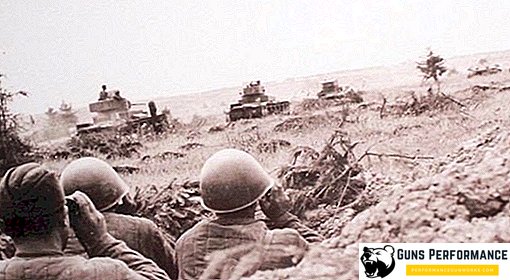
July 29, the Wehrmacht managed to capture the city Yelnya, thereby forming a projection to the east. A separate page in the history of the Great Patriotic War is connected with this protrusion. Within one and a half months, the Red Army made a number of attempts to cut off the ledge and deprive the Wehrmacht of an operationally advantageous springboard in the Yelni area. Only by the beginning of September the Soviet 24th Army managed to capture the city. However, in the battles the Soviet units suffered very large losses, in connection with which the Reserve Front was significantly drained of blood. In addition, since the end of August, the elninsky bridgehead has lost all practical value due to the withdrawal of the main parts of the Wehrmacht from it, as well as the onset of German forces in other sectors of the front. In addition, subsequent events showed that the counter-attack operation in the Yelni area had almost no sense. However, at the same time, it was one of the first serious Soviet victories.
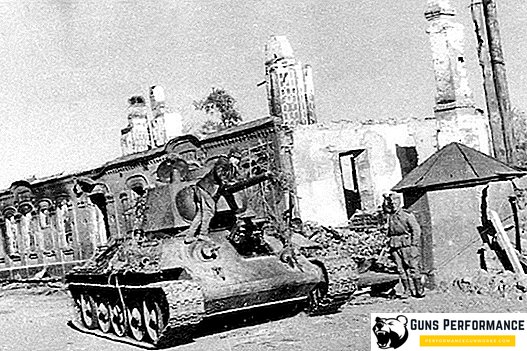
In mid-September, the Wehrmacht reduced activity in the central sector of the Soviet-German front and conducted a series of operations in the north (Leningrad blockade) and in the south (encirclement of the South-Western Front and Kiev, the invasion of Crimea), which created favorable conditions for the start of Moscow Nevertheless, the surrounded Soviet units continued to provide desperate and stubborn resistance, thereby knocking down the offensive of the German troops. By the end of September, after winning operational victories in the south and in the north, the Wehrmacht began to concentrate reserves in the central direction. It became clear where the decisive battles would take place.
Forces and plans of the parties
At the end of September, the Wehrmacht managed to concentrate very serious forces in the Moscow sector, which included three armies (the 2nd, 4th and 9th) and three tank groups (the 2nd, 3rd and 4th). These troops were part of the Army Group Center, commanded by General F. von Bock. From the air, German troops supported the 2nd Air Fleet under the command of A. Kesselring. The total number of the German grouping was 78 divisions, or nearly two million people, about 2,000 tanks and 1,300 aircraft.
Wehrmacht was opposed by three fronts of the Red Army: the Western (16th, 19th, 20th, 22nd, 29th and 30th armies) under the command of Colonel-General I. S. Konev, Reserve (24th , The 31st, 32nd, 33rd, 43rd and 49th armies) under the command of Marshal S.M. Budyonny and Bryansk (the 3rd, 13th and 50th armies, as well as separate operational group) under the command of Colonel-General A. I. Eremenko. The total number of Soviet troops was about 96 divisions, or 1 million 200 thousand people, about 1000 tanks and about 550 aircraft. Thus, the overall advantage was on the side of the Germans.
The plan of the German command, called "Typhoon", was to break through the defenses of the Soviet troops in a number of sectors, surrounding the main groups of the Bryansk and Western fronts and attacking Moscow that was almost blatant. It was planned not just to take the capital of the Soviet Union, and surround it. Hitler dreamed that no Moscow resident could leave the city.
The plans of the Red Army were diametrically opposed. It was supposed to persistently defend the territory, inflicting counter-attacks and more and more exhausting the Wehrmacht. Then it was planned to carry out a counteroffensive with the help of fresh forces already accumulating in the area of the capital at the expense of the reserves of the Supreme Command and divisions arriving from the Far East and Siberia.
The beginning of the battle (September 30 - October 11, 1941)

September 30, 1941 began the offensive of the German 2nd Tank Group. This group was concentrated in the south-west of Bryansk, therefore, its promotion was carried out in the northeast direction. Already in the first week, German troops here managed to capture Bryansk, Orel and surround all the armies of the Soviet Bryansk front.
Simultaneously with the events in the Bryansk Front, the drama broke out to the north, in the Vyazma region. Here the German offensive began on October 2, but also in the first week it reached the goal of encircling the troops of the Soviet Western Front. Thus, already in the first week of Operation Typhoon, the troops of two of the three Soviet fronts found themselves in the “boilers”.
The struggle of the encircled units of the Red Army was truly desperate. In this case, for a short time, Soviet troops managed to make a hole in the ring of the Western Front, but few managed to get out of the ring. Total killed and captured by the Red Army in early October 1941, lost more than 650 thousand people. Now the front in the Moscow direction held only 90 thousand people.
After crushing defeats at Vyazma and Bryansk, the Soviet leadership decided to transfer the remnants of the Reserve Front to the Western forces. The new commander of the Western Front was appointed General G. K. Zhukov. He managed to organize a new line of defense, relying on the Mozhaisk frontier.
A new tactic of the Soviet leadership in the Moscow sector was to cover the main highways leading to the capital, as the forces to hold the front line were completely gone. After the completion of the liquidation of the Soviet troops encircled earlier, the German command again launched an offensive, believing that the Soviet troops in the Moscow sector were defeated. However, the Red Army units offered stubborn and desperate resistance, trying to detain the enemy.
The outcome of the first stage of the battle for Moscow was a major defeat for the Red Army and the loss of territories important for defense. In the OKH, a victorious atmosphere reigned, since Hitler believed that the fate of Moscow was decided.
Defense of the Red Army on the outskirts of Moscow (October 12 - December 5, 1941)
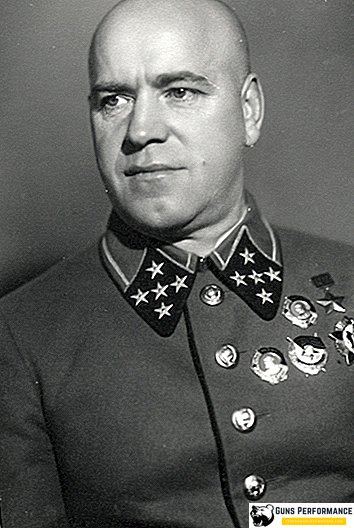
In mid-October 1941, the Soviet leadership decided to transfer all troops of the Mozhaisk line of defense to the Western Front. The Soviet troops, acting along the main highway, managed several Wehrmacht units in the Mozhaisk region for about 10 days, thereby gaining time to strengthen the defensive lines in the Moscow region.
October 14, German troops managed to seize the city of Kalinin (now Tver). Here the Soviet Kalinin Front was formed, whose troops began to inflict frequent counterattacks on the enemy, breaking his offensive outburst and eliminating the danger to Moscow from the north-west.
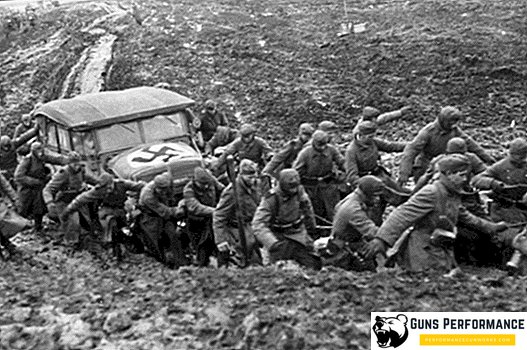
On October 19, 1941, on the outskirts of Moscow, a mudslide began, expressed in the fact that the roads practically turned into mud jelly. The mudslide caused serious supply difficulties for the Wehrmacht; for the Soviet side, though it led to difficulties, it was not so unusual. In this regard, the offensive of the German army slowed down again, which did not fail to use the Soviet leadership. To Moscow, large forces from the reserves of the Supreme Command were equipped, defensive lines were equipped.
However, even on October 15, evacuation of various state institutions began from the capital. On October 20, a state of siege was introduced in the city. But I.V. Stalin refused to leave the city, demonstrating strong confidence in the fate of Moscow. The task of organizing the defense of approaches to Moscow was entrusted to the commander of the Western Front, General GK. Zhukov, and the city itself - commander of the Moscow garrison, Lieutenant-General Artemyev.
The thaw period ended on November 4 with the onset of frost. The German generals waited for the frost as a relief that could save the troops from the difficulties of the thaw. But in reality, the worst for them was just beginning. The frosts almost instantly struck the units of the Wehrmacht, not prepared for difficult weather conditions.
However, the German offensive continued. In the twentieth of October, the German troops began to move toward Tula, and on the 29th they reached the city. Defended Tula 50th Army. She, relying on the fortified line, created with the broad participation of city residents, managed to detain the enemy and prevent him from breaking through. After the collapse of plans for the rapid capture of Tula, units of the German 2nd Tank Group began moving east of the city, with the aim of grabbing the 50th Soviet army and making their way to Moscow from the south. But here, by the end of November, the enemy was expected to fail: the Soviet troops, continuously counterattacking, managed to completely stop the advance of the Germans.
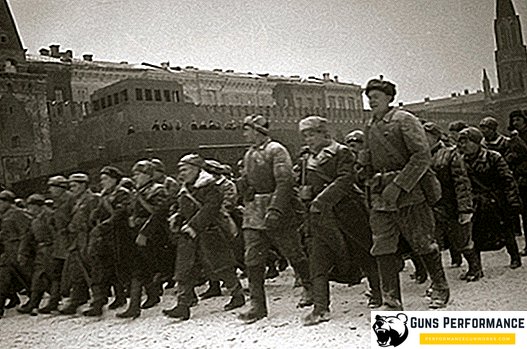
On November 7, 1941, a traditional parade of Soviet troops was held on Red Square. Before the troops, some of which after the parade immediately went to the front, made I.V. Stalin. In his speech, he reminded the Soviet soldiers that they had a "great mission to liberate the peoples of Europe enslaved by fascism." This performance and the parade in general had a powerful effect, which caused an increase in the fighting spirit of the troops and the people. It became clear that Moscow would not be surrendered.
The general attack of the Wehrmacht on Moscow began on November 15-16. At this time, the Wehrmacht had already 51 division, of which 13 tank. Such a reduction in troops involved in the operation, compared with the end of September, is due to the fact that some of the Wehrmacht’s forces were constrained by Soviet troops or suffered losses and were taken to the rear to replenish and restore the materiel.
During the end of November, the Germans managed to seize Klin and Solnechnogorsk, as well as go to the channel Moscow-Volga. About 30 kilometers remained to the Kremlin, but the Germans failed to overcome them. The Soviet defense became more dense compared to October, and now the Wehrmacht was opposed by troops, the total number of which was approximately 1 million people and 800 tanks. Having lost an overwhelming numerical superiority on the decisive lines, the German troops quickly lost their “penetrating” ability and at the end of November-early December were bogged down in local battles, which had completely stopped by December 5, 1941.
Results of defensive battles
As a result of the battles of October-December 1941, the Wehrmacht suffered losses of approximately 200 thousand people. German troops lost their ability to attack, and the severe frosts practically paralyzed their active actions. The cases of frostbite, as well as the associated losses, have become frequent. By early December, the once formidable group of armies, the Center, was a sad sight. However, it was still an impressive group of about 1,700,000 people, located at the gates of the Soviet capital.
Soviet troops suffered much more serious losses: about 650 thousand people were killed, wounded and captured. However, these losses were not at all critical: in November, the number of troops was again brought up to a million. The morale of the Red Army was very high, unlike the Wehrmacht.
Taking into account all these factors, the Soviet leadership decided to carry out a counteroffensive operation in order to throw the Germans away from Moscow, and also to defeat the Army Group Center. Planning for the operation began in the period of heavy defensive battles and subject to the numerical superiority of the enemy.
The German command planned to keep the defense in order to re-launch an attack against Moscow in a favorable situation.
The beginning of the offensive (December 5, 1941 - January 8, 1942)
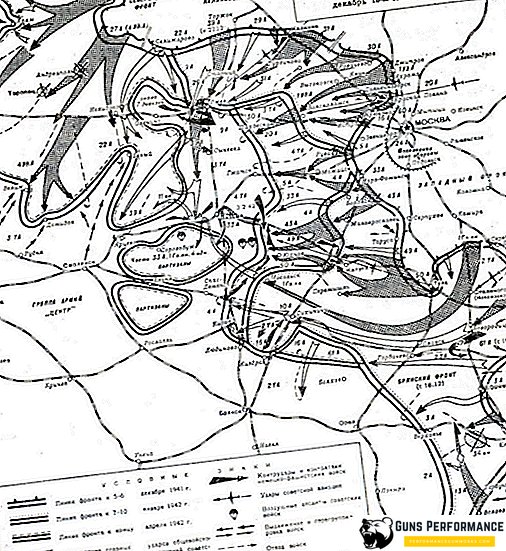
At dawn on December 5, 1941, Soviet troops (the Kalinin Front) suddenly launched a counteroffensive for the Nazis near Moscow. The next day, the Western Front also launched an offensive, thanks to which the German Army Group Center was under heavy pressure from Soviet forces. From the first days the Red Army suffered serious losses, but managed to launch a successful offensive.
In the very first days, the German command did not yet have data that could provide him with a clear picture of the events taking place. However, then the management realized the full scale of the possible disaster. Considering that the Wehrmacht’s attack failed, on December 8, 1941, Hitler ordered the German troops to go on the defensive on the entire Eastern Front. However, it was impossible to keep all the lands seized during the 1941 campaign.
In the Kalininsky direction, Soviet troops, wedged into the enemy defenses, forced him to begin withdrawing troops from Kalinin. As a result of intense battles, the city was liberated on December 16, and the fresh forces brought into battle embraced the positions of the Germans from the south, thus creating the Rzhevsky ledge.
In the central (Klin and Solnogorsk) direction, battles also developed dramatically. The Germans were planning to turn Klin into a fortified point and force Soviet troops to suffer huge losses in their attempts to take the city. However, by December 13, the Red Army units managed to half-circle Wehrmacht units, so the German command had to withdraw troops to the west. As a result, Wedge was taken already on December 16th. December 20 Volokolamsk was released. The cities of Naro-Fominsk and Borovsk were liberated south-west of Moscow in late December-early January.
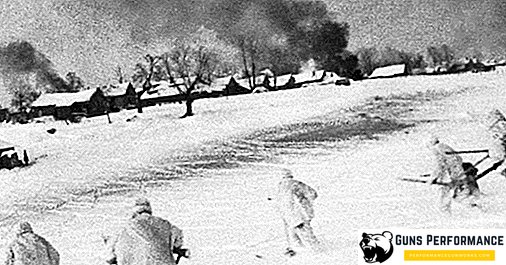
In the area of Tula, Soviet troops attacked the sprawled orders of the 2nd German Tank Group. Parts of the Wehrmacht, trying to maintain their fighting efficiency and prevent a catastrophe, began to retreat to the west and southwest. As a result of fierce fighting, the Soviet troops managed to eliminate the threat to Tula and create the prerequisites for the liberation of Kaluga, which happened on December 30th.
On January 8, the Soviet offensive near Moscow ended.
Continuation of the Soviet counteroffensive (January 9 - April 20, 1942)
As a result of the Soviet counter-offensive, very bright prospects opened up for the Red Army. Considering the fact that the troops did not lose their combat capability and offensive outburst, the Soviet leadership decided to launch an offensive in order to knock the Germans out of Rzhev and destroy the Germans in the Demyansk pot. However, these actions of the Soviet troops were very unsuccessful. This is largely due to the fact that the troops still suffered significant losses during previous operations, as well as very difficult weather conditions.
In the area of Rzhev, German troops built a very powerful defense, which was flexible. Having reserves behind the front line, the Germans, albeit with great difficulty, managed not only to keep Rzhev and Demyansk, but also to reestablish a land connection with Demyansk.
In the central direction, at the end of January, Soviet forces attempted to encircle the Army Group Center, for which a massive airborne assault force was deployed in the Rogachev area as part of the 4th airborne brigade. Also, the 33rd Army under the command of Lieutenant-General MG Efremov was advanced towards the paratroopers. However, the German troops, having managed to organize after a long retreat, attacked the rear areas of the army, which were not covered. В результате 33-я армия попала в окружение, в котором находилась весьма продолжительное время и из которого смогла выйти лишь часть её личного состава. Сам генерал-лейтенант Ефремов застрелился.
В результате боёв января-апреля 1942 года, на западном направлении инициатива начала ускользать из рук Красной Армии. Советские войска понесли ощутимые потери и к маю были вынуждены перейти к обороне.
Потери сторон и итоги битвы за Москву
В ходе Московской битвы советские войска понесли огромные потери. Около 930 тысяч человек было убито, умерло от ран либо попало в плен. Примерно 880 тысяч человек составили потери Красной Армии ранеными. Также было потеряно более 4000 танков и около тысячи самолётов.
Немецкие потери составили примерно 460 тысяч человек убитыми и умершими от ран. Потери в боевой технике составили около 1600 танков и 800 самолётов.
Результаты битвы за Москву весьма противоречивы и до сих пор являются одной из тем оживлённых споров военных историков. При этом нужно оценивать не только территориальные результаты сражения, но и потери, а также изменения в стратегической и оперативной обстановке для обеих сторон.
В ходе Московской битвы Красная Армия понесла громадные потери (особенно на её начальном этапе), но затем сумела нанести ряд поражений немецким войскам, освободив часть потерянной в октябре-декабре территории. Однако в то же время советское командование упустило реальную возможность полного разгрома самой мощной немецкой группировки - группы армий "Центр" - и добиться победы над Третьим Рейхом уже в 1942-1943 годах. Тем не менее, наступательные операции были также проведены и на других участках фронта, что поставило немецкие войска в очень сложное положение. Тем не менее, уже в конце апреля 1942 года ситуация для советских войск начала ухудшаться, и вскоре инициатива вновь перешла к вермахту.
Немецким войскам удалось в начале сражения продвинуться практически вплотную к Москве, но затем, понеся серьёзные потери, и отступить на 150-300 километров на запад. Кроме того, некоторые части вермахта оказались в крайне невыгодном оперативном положении, ввиду чего им пришлось летом-осенью 1942 года проводить ряд частных операций по ликвидации угроз. В то же время немцам так и не удалось овладеть Москвой, и уже летом 1942 года вермахт вновь был вынужден начинать изнурительное наступление вглубь Советского Союза. Германия оказалась втянута в затяжную войну, победного конца которой не было видно. Тем не менее, командованию вермахта удалось спасти Восточный фронт от краха зимой 1941-1942 года и сохранить боеспособность войск.
Для Гитлера советское контрнаступление под Москвой стало весьма неприятным "сюрпризом", вину за который он возложил на целый ряд немецких военачальников. Так, в декабре-январе со своих должностей были смещены: главнокомандующий сухопутными силами Германии В. фон Браухич (его место занял сам Гитлер), командующий группой армий "Центр" Ф. фон Бок, а также командующий 2-й танковой группой Г. Гудериан. Эти перестановки стали своеобразным признаком истерии, царившей в кругах германского командования перед лицом возможной катастрофы.
Для союзных СССР держав битва под Москвой стала своеобразным "открытием" - стало ясно, что немцев можно бить и побеждать. С целью лично убедиться в успехах советского оружия, под Москвой побывал ряд официальных лиц из Великобритании и США. Масштабы победы над вермахтом поразили их.
Для советского народа победа под Москвой также стала первой радостной вестью за долгие месяцы страданий и потерь. Стало ясно, что победа над нацизмом неминуема.
Учитывая все факты, можно с уверенностью сказать, что битва под Москвой, хоть и была по сути ничьей в военно-оперативном отношении, но стратегически она однозначно стала победой как для Советского Союза, так и для его союзников.



